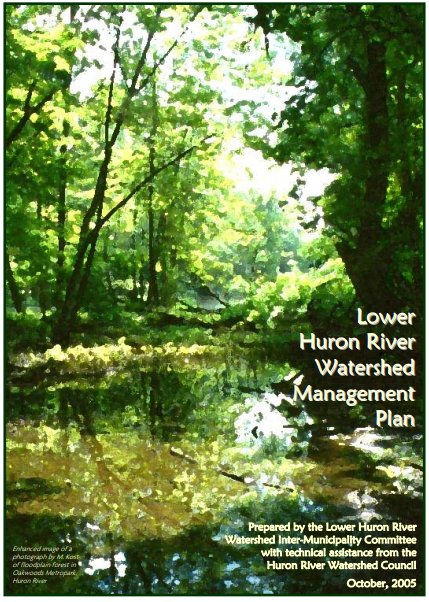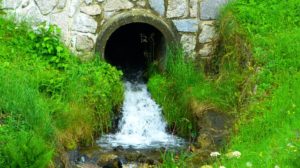
Our Watershed Management Plans (WMP) outline ways for communities to address problems in our watershed while growing their economies and infrastructure to meet the needs of residents and the river. Producing WMPs involves physical, biological, and chemical studies of the water and land, and surveying the public to assess knowledge of and attitudes toward water among residents. We use this data to assess results and make recommendations based on the analysis. The finalized plans describe current conditions of natural resources and land use impacts, explore existing and future threats to the river systems, and prescribe actions for protection and restoration. Upon completion, HRWC works with stakeholders often through its stormwater groups (below) to implement recommendations from the WMPs.
HRWC’s Watershed Management Plans
- The Middle Huron River Watershed Management Plan, Section 1. 2022. Includes: The Huron River from Flook Dam (Portage Lake) to Barton Pond, Honey, Boyden, and Mill Creeks.
- The Middle Huron River Watershed Management Plan, Section 2 (2020). Includes: The Huron River from Barton Pond to the Confluence of Fleming Creek, Associated Tributaries, Fleming Creekshed, Allens Creekshed, Malletts Creekshed, Millers Creekshed, Swift Run Creekshed, Traver Creekshed
- Norton Creekshed Watershed Management Plan (2018)
- The Lower Huron Watershed Management Plan (2012)
- Portage Creekshed Watershed Management Plan (2010)
- The Chain of Lakes Watershed Management Plan (2007)
- The Upper Huron/Kent Lake Subwatershed Management Plan (2006)
Currently, HRWC is working on
- The Middle Huron River, Section 3 (anticipated 2023-2024). Includes: The Huron River from the Confluence of Fleming Creek to French Landing Dam (Belleville Lake), Associated Tributaries, Ford Lake, and Belleville Lake.
Also available: TMDL Implementation Plans for impaired sections of the Huron
- Brighton Lake – Phosphorus
- Ford and Belleville Lakes – Phosphorus
- Honey Creek- Bacteria
- Huron River (Argo to Geddes) – Bacteria
- Malletts Creek – Biota
- Malletts Creek – Total Suspended Solids
- Strawberry Lake – Phosphorus
- Swift Run – Biota
- Swift Run – Total Suspended Solids
Stormwater Groups
Following the development of a watershed management plan, HRWC brings together groups of public and municipal stakeholders to develop collaborative approaches to stormwater compliance and watershed management to meet the objectives of the WMP.




